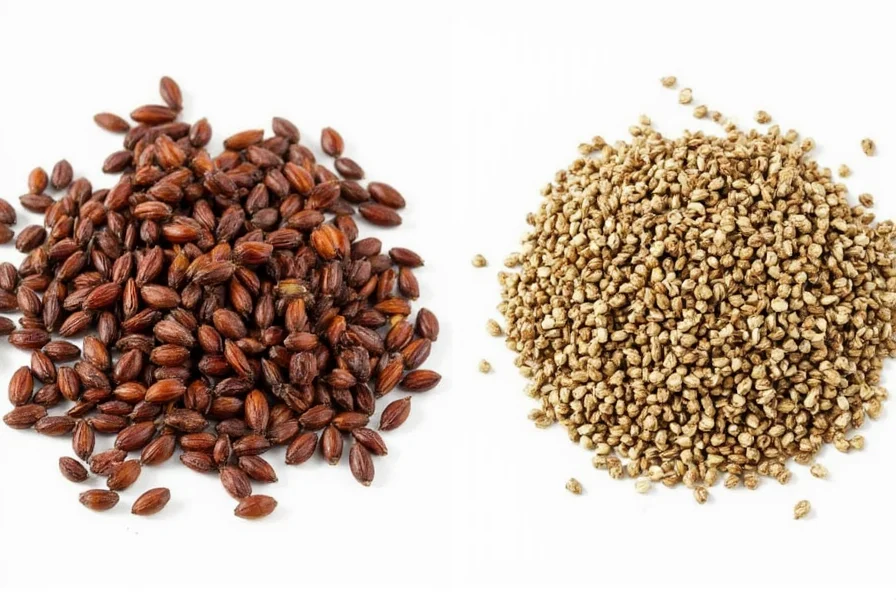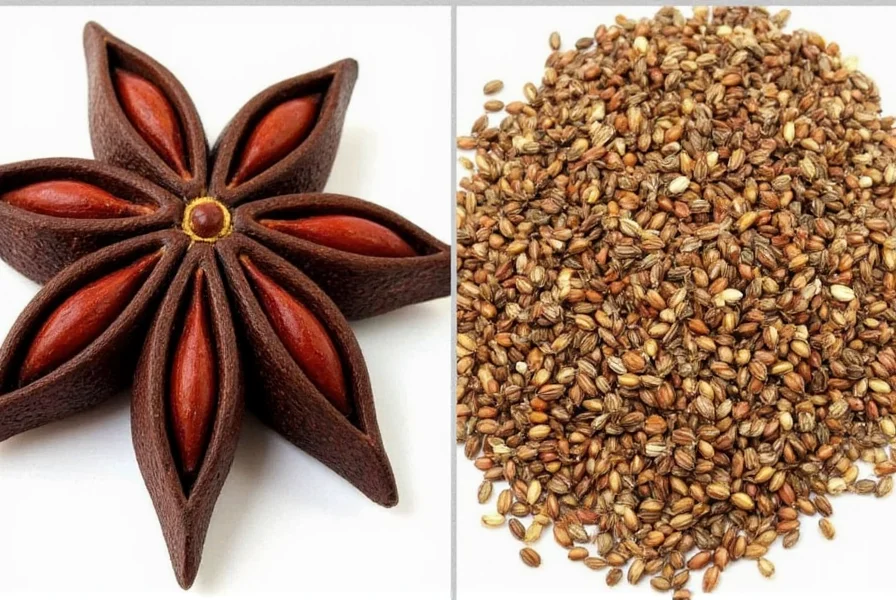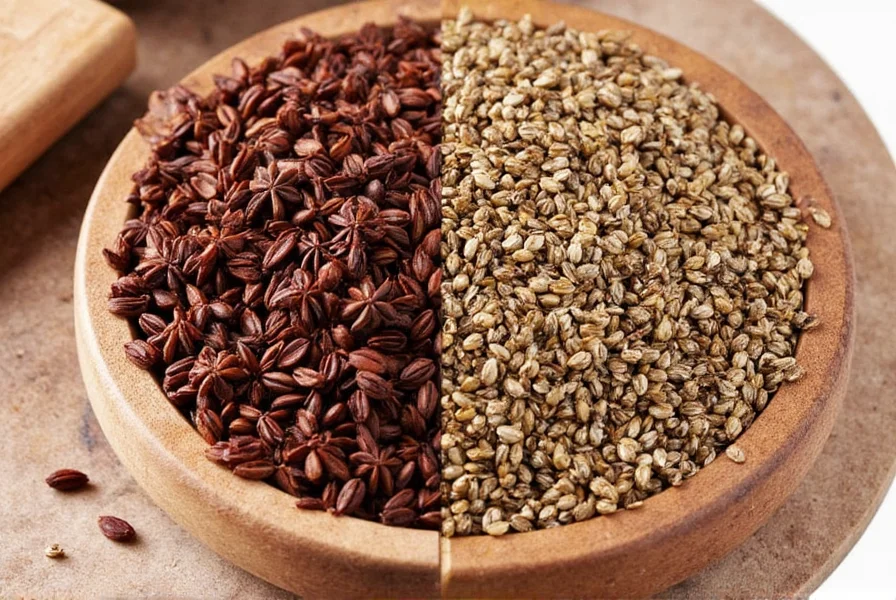Understanding the Fundamental Differences Between Star Anise and Anise Seed
Many home cooks and professional chefs confuse star anise and anise seed due to their similar names and shared licorice-like flavor profile. However, these two ingredients come from entirely different plant families and offer unique characteristics that affect how they're used in cooking. Understanding the difference between star anise and anise seed is essential for achieving authentic flavors in various global cuisines.
Botanical Origins and Physical Characteristics
Star anise grows on Illicium verum, an evergreen tree native to Southwest China and Vietnam. The spice consists of the star-shaped fruit pods, typically with 6-8 points, each containing a single seed. These pods measure about 1-2 inches across and range from reddish-brown to deep mahogany when dried.
In contrast, anise seed comes from Pimpinella anisum, an annual herb in the Apiaceae family (same as parsley, carrots, and dill). The seeds are small, grayish-brown crescents about 1/8 inch long with a distinctive curved shape and fine ridges running their length.
| Characteristic | Star Anise | Anise Seed |
|---|---|---|
| Botanical Name | Illicium verum | Pimpinella anisum |
| Plant Type | Evergreen tree | Annual herb |
| Part Used | Whole fruit pod | Seed |
| Shape | 8-pointed star | Crescent-shaped seed |
| Flavor Intensity | Strong, pungent | Milder, sweeter |
Flavor Profiles and Culinary Applications
When comparing anise seed vs star anise flavor characteristics, both contain anethole as their primary flavor compound, but in different concentrations. Star anise delivers a more intense, sharper licorice flavor with subtle notes of cinnamon and clove. Its robust flavor stands up well to long cooking times, making it ideal for braises, stews, and slow-simmered broths.
Anise seed offers a sweeter, more delicate licorice flavor with subtle floral notes. This makes it perfect for baked goods, desserts, and delicate sauces where a pronounced licorice flavor might overwhelm other ingredients. Professional bakers often prefer anise seed for cookies, biscotti, and breads where its milder flavor complements other spices.
Understanding star anise vs anise seed in recipes reveals their distinct culinary roles:
- Star anise features prominently in Chinese five-spice powder, Vietnamese pho broth, Indian garam masala, and Middle Eastern stews
- Anise seed appears in Mediterranean breads, German pfeffernüsse cookies, Italian biscotti, and Middle Eastern za'atar blends
Substitution Guidelines for Home Cooks
When considering can I use star anise instead of anise seed, the substitution ratio matters significantly. Due to star anise's stronger flavor, use these guidelines:
- 1 whole star anise = 1/2 teaspoon ground anise seed
- 1 teaspoon anise seed = 2 whole star anise pods (crushed)
For the star anise substitute for anise seed in baking, consider using fennel seeds or a combination of fennel and a touch of licorice extract. When substituting in savory dishes, remember that star anise imparts a more complex flavor profile that includes subtle woody notes absent in anise seed.
Safety Considerations and Quality Selection
Consumers should know that Japanese star anise (Illicium anisatum) is toxic and should never be consumed. Always purchase Chinese star anise from reputable sources. Look for deep reddish-brown pods with a strong, sweet aroma for the best quality.
When selecting anise seed, choose plump, grayish-brown seeds with a strong fragrance. Avoid seeds that appear dull or have lost their aroma, as this indicates age and diminished flavor. Properly stored in an airtight container away from light, both spices maintain peak flavor for 1-2 years.
Storage Recommendations for Maximum Flavor Retention
To preserve the distinctive flavor compounds in both spices, store them properly:
- Keep whole star anise pods intact until ready to use
- Store anise seeds in their whole form and grind only as needed
- Use dark glass or opaque containers to protect from light
- Avoid storing near heat sources like stoves or ovens
Ground versions of either spice lose flavor rapidly, so always opt for whole forms when possible. The essential oils responsible for their characteristic flavors evaporate quickly once ground.
Traditional Uses Beyond Culinary Applications
Both spices have historical medicinal uses, though scientific evidence varies. Traditional Chinese medicine has used star anise for digestive issues and respiratory conditions. Anise seed has been used in Mediterranean cultures as a digestive aid and breath freshener. Modern research shows both contain compounds with potential antioxidant properties, though culinary use provides minimal therapeutic benefit.

Practical Tips for Using These Spices in Your Kitchen
When working with star anise vs anise seed in recipes, consider these professional tips:
- Remove whole star anise pods before serving dishes—they're too hard to eat
- Toast anise seeds lightly before grinding to enhance their flavor
- Add star anise early in cooking for maximum flavor extraction
- Use anise seed toward the end of baking to preserve volatile flavor compounds
- Crush star anise slightly when using in quick-cooking dishes for faster infusion
Understanding the difference between anise and star anise helps prevent recipe failures and ensures authentic flavor profiles in global cuisines. While they share similar flavor compounds, their distinct characteristics make them non-interchangeable in many traditional dishes.












 浙公网安备
33010002000092号
浙公网安备
33010002000092号 浙B2-20120091-4
浙B2-20120091-4